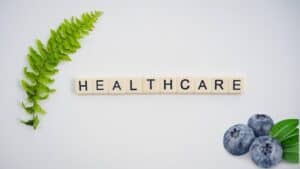OVERVIEW
A diet often characterised by excessive sugar, fat, and salt intake, while lacking in vegetables and fruits, can play a role in the emergence of non-communicable diseases (NCDs), also known as chronic diseases, asserts the World Health Organisation and Unicef publications in 2023 (WHO). NCDs are a group of long-term healthcare conditions that can be caused by genetic, physiological, environmental, behavioural and alimentary factors. NCDs include overweight/obesity, cardiovascular disease (such as arterial hypertension, myocardial infarction and stroke), diabetes mellitus, cancer and osteoporosis. NCDs kill 41 million people each year, representing 74% of deaths globally with almost 7 people out of 10 originating from low-and middle-income countries. Relevant studies has shown that all age range; children, adults, and the elderly are all vulnerable to NCD due to risk factors such as harmful use of alcohol, poor physical activity and an unhealthy diet (WHO, 2022).
 Scientific literature indicates that anthocyanins (ACNs) found in red, purple, and blue fruits and vegetables play a crucial role in protecting against non communicable diseases (NCDs). These are absorbed into the bloodstream and transported to target tissues.
Scientific literature indicates that anthocyanins (ACNs) found in red, purple, and blue fruits and vegetables play a crucial role in protecting against non communicable diseases (NCDs). These are absorbed into the bloodstream and transported to target tissues.
There is evidence suggesting that anthocyanins and some of their metabolites can cross the blood-brain barrier and exert molecular-level actions, influencing signalling pathways, genetic expression, and protein function, explains Kozłowska and Dzierżanowski in 2021. Anthocyanins (ACNs) are antioxidants contained in crops, beans, grapes, blueberries, pomegranates, and red wines. These antioxidants exhibit a relatively low bioavailability, meaning that they are slowly digested by our body, leading to an extended duration in our system. During digestion, anthocyanins undergo significant changes in pH and interact with endogenous and microbial enzymes, leading to their reduction, hydrolysis, and transformation into metabolites and catabolic products. 
ANTHOCYANINS APPLICATION
In a study conducted by Joseph, Edirisinghe, and Burton-Freeman in 2014, the efficacy of anthocyanin supplementation was investigated in 27 men with elevated blood pressure. The subjects were given four capsules daily, each containing 80 mg of anthocyanins, over a period of 4 weeks. The results showed that anthocyanin supplementation led to a significant positive influence on inflammatory and immune processes.
Kozłowska and Dzierżanowski observed that patients who consumed diets supplemented with 320 mg of anthocyanins for a duration of four weeks experienced notable improvements in their health parameters compared to healthy individuals. Specifically, females showed a reduction in serum fasting blood glucose by 13%, triglyceride (TG) levels by 25%, low-density lipoprotein cholesterol (LDL-C) levels by 33%, and hs-CRP level by 28%. Overall, the dietary supplementation of anthocyanins at a dosage of 320 mg per day was found to suppress the expression of pro-inflammatory genes and factors.
Anthocyanins have shown promising effects in improving endothelial function, reducing blood pressure, and promoting the health of blood vessels, all of which are essential for cardiovascular well-being.
Anthocyanins have been linked to improved regulation of blood sugar levels and increased insulin sensitivity, potentially lowering the risk of diabetes and metabolic syndrome. Studies have also suggested that anthocyanins may have anti-carcinogenic properties by inhibiting the growth of cancer cells and reducing the risk of specific cancers, such as those affecting the colon, breast, and prostate, explains Joseph, Edirisinghe, and Burton-Freeman, 2014.
MECHANISM OF ACTION
The antioxidant properties of Anthocyanins help counteract the harmful effects of free radicals in the body. They also exhibit anti-inflammatory characteristics, which can help alleviate chronic inflammation associated with non-communicable diseases (NCDs) primarily through the inhibition of the activation of nuclear factor-kappa B cells (NF-κB). NF-κB are responsible for controlling DNA transcription, cytokine production, and cell survival asserts Kozłowska and Dzierżanowski, 2021.
CURRENT STATE – CONSUMPTION OF FOOD RICH IN ANTHOCYANINS
Negative trend: Young people might experience the challenge of eating healthy, they often skip breakfast and rely on cheap, fatty takeaways as a convenient option to keep them going throughout the day; Does this sound familiar?
 Positive trend: There is a rising emphasis on foods eaten daily as seeds, and nuts, with a higher share of the household food budget allocated to these items. (FAO; 2023).
Positive trend: There is a rising emphasis on foods eaten daily as seeds, and nuts, with a higher share of the household food budget allocated to these items. (FAO; 2023).
Positive trend: the distribution of household food expenditure remains consistent for vegetables, fruits, fats and oils across the rural-urban continuum. This suggests that regardless of the level of urbanisation, these food categories continue to hold a relatively steady share of the overall food budget in households worldwide (FAO; 2023).
Fact: Animal-sourced food consumption is strongly driven by income across the rural–urban continuum, in contrast, fruit and vegetable consumption is driven by access and availability (FAO; 2023).
The question that remains now is how to bridge the gap between income and access to food, to reduce hunger and improve access to good nutrition?
THE WAY FORWARD
With scientific evidence demonstrating that alimentation- Food is Medicine can possibly reduce the outcome of NCDs, it’s time to change this narrative and make healthy choices and a healthy diet more and accessible for all people. After all, prevention is better than cure. Public policies have the potential to establish favourable conditions through accessing more funding thereby fostering more effective collaborations between the public and private sectors. Clinicians and healthcare professionals should be supported by the government to prescribe food for long-term treatment along with medication to reduce chronic disease across the globe.
The World Food Tracker is a multi-stakeholder online platform that supports: 1.Individuals to plan their meals, monitor their nutritional consumption, monitor and prevent edible food waste and source their food from local food producers
2.Farmers to adopt more sustainable practices during food production while selling fresh and highly nutritious food to local consumers and food businesses
3.Hotels and Restaurants to plan their meal, engage with local consumers and source their produce locally from sustainable farmers/producers.
4.The local authorities to support the food system and ensure that there is access to good food for everyone in their locality.
Sign up to the world food tracker today – www.worldfoodtracker.com or contact us – Info@IntelliDigest.com
Reference list
Afshin, A., Sur, P.J., Fay, K.A., Cornaby, L., Ferrara, G., Salama, J.S., Mullany, E.C., Abate, K.H., Abbafati, C., Abebe, Z., Afarideh, M., Aggarwal, A., Agrawal, S., Akinyemiju, T., Alahdab, F., Bacha, U., Bachman, V.F., Badali, H., Badawi, A. and Bensenor, I.M. (2019). Health effects of dietary risks in 195 countries, 1990–2017: a systematic analysis for the Global Burden of Disease Study 2017. The Lancet, 393(10184), pp.1958–1972. doi:https://doi.org/10.1016/s0140-6736(19)30041-8. Joseph, S.V., Edirisinghe, I. and Burton-Freeman, B.M. (2014). Berries: Anti-inflammatory Effects in Humans. Journal of Agricultural and Food Chemistry, 62(18), pp.3886–3903. doi:https://doi.org/10.1021/jf4044056. Kozłowska, A. and Dzierżanowski, T. (2021). Targeting Inflammation by Anthocyanins as the Novel Therapeutic Potential for Chronic Diseases: An Update. Molecules, 26(14), p.4380. doi:https://doi.org/10.3390/molecules26144380. Melaku, Y.A., Temesgen, A.M., Deribew, A., Tessema, G.A., Deribe, K., Sahle, B.W., Abera, S.F., Bekele, T., Lemma, F., Amare, A.T., Seid, O., Endris, K., Hiruye, A., Worku, A., Adams, R., Taylor, A.W., Gill, T.K., Shi, Z., Afshin, A. and Forouzanfar, M.H. (2016). The impact of dietary risk factors on the burden of non-communicable diseases in Ethiopia: findings from the Global Burden of Disease study 2013. International Journal of Behavioral Nutrition and Physical Activity, [online] 13(1). doi:https://doi.org/10.1186/s12966-016-0447-x. Publications. (n.d.). The State of Food Security and Nutrition in the World. [online] Available at: https://www.fao.org/publications/home/fao-flagship-publications/the-state-of-food security-and-nutrition-in-the-world/en. Shekar, M., O’Hearn, M., Knudsen, E., Shibuya, K., Bishop, S., van Berchem, H., EgertonWarburton, C., Shibata Okamura, K. and Mozaffarian, D. (2023). Innovative financing for nutrition. Nature Food, [online] 4(6), pp.464–471. doi:https://doi.org/10.1038/s43016-023- 00778-x. www.unicef.org. (n.d.). A healthy diet can reduce the risk of non-communicable diseases | UNICEF South Africa. [online] Available at: https://www.unicef.org/southafrica/blog/healthydiet-can-reduce-risk-non-communicablediseases#:~:text=An%20unhealthy%20diet%2C%20typically%20high. www.who.int. (2022). Non communicable diseases. [online] Available at: https://www.who.int/news-room/fact-sheets/detail/noncommunicablediseases#:~:text=Noncommunicable%20diseases%20(NCDs)%2C%20also.

